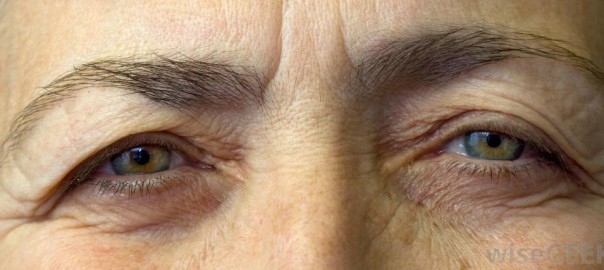Turning Back The Clock On Aging Eyes

Gene manipulation and induced pluripotent stem cells (iPSCs) are at the cutting edge of regenerative medicine. Research is underway in using these cellular and genome-editing techniques to treat innumerable diseases afflicting human beings, but their use in repairing the damages of aging have ethical and cultural implications. However, there is a growing change in attitude and increasing acceptance that this is realistic and achievable. “Anti-aging” is no longer a dirty word.
A pioneer in biomedical gerontology (the study of aging), Aubrey de Grey, Ph.D., is working to promote the widespread use of regenerative medicine in diseases of aging. These range from Alzheimer’s dementia and Parkinson’s disease to macular degeneration of the eye. The idea is to develop therapies for age-related conditions based on the premise that aging cells have toxic molecular waste products that must be removed to reverse the damage. Additionally, after decades of stagnation, there is renewed interest in cancer immunotherapy; animal models have shown promising results in the removal of harmful cells that the body is unable to kill.
When it comes to regenerative medicine, the human eye offers several advantages over other organs in the body. Ocular surgery has advanced sufficiently such that a surgeon is able to access every part of the eye. There are noninvasive methods to monitor the transplanted cells and good parameters to measure the outcome. Finally, since the eye is a small organ, comparatively fewer cells need to be transplanted. Thus, ocular diseases are of particular interest to researchers in regenerative medicine.
In people over the age of 60, degeneration of the macula (the small central portion of the retina) of the eye is the leading cause of vision loss. The retina is the sensory tissue that allows us to see. Although usually not blinding, age-related macular degeneration (AMD) can cause lifestyle-limiting visual disability. Current therapies consist of vitamin supplementation, laser therapy, and low vision aids such as special lenses or magnifying tools. Submacular surgery and retinal translocation surgery remain experimental. The vision loss from AMD is irreversible and can cause a substantial decline in a person’s quality of life.
The California Project to Cure Blindness is working to develop a stem cell-based treatment for AMD. Because the condition is the result of the death or dysfunction of retinal pigment epithelium (RPE) cells, the strategy is to grow these cells on a bio-stable synthetic matrix in the laboratory. This RPE-enriched “scaffold” will then be implanted into the eye to replace the damaged cells. The protocol was developed at the University of California, Santa Barbara (UCSB), where Dennis Clegg, Ph.D., succeeded in converting undifferentiated embryonic stem cells into RPE cells. The project, funded by the California Institute of Regenerative Medicine (CIRM), began in 2010. Recruitments for the clinical trial are underway.
Understanding the biology behind cell regeneration is challenging at the very least, and a team of experts in retinal conditions and biomedical therapeutics is combining efforts to try and alter the retinal micro-environment and reverse AMD. Regenerative medicine research remains encumbered by a lack of funding, but to fully take advantage of the technological advances and move beyond boutique application, the scientific community needs to keep pressing forward.
References:
http://www.genengnews.com/gen-articles/regenerative-medicine-comes-of-age/5738/?page=1
http://www.webmd.com/eye-health/macular-degeneration/age-related-macular-degeneration-overview
Image courtesy of wisegeek.com


